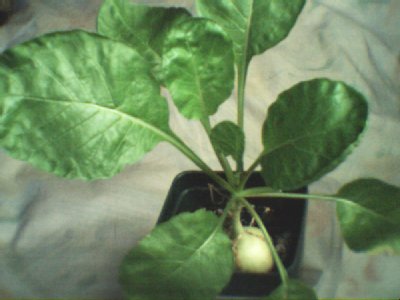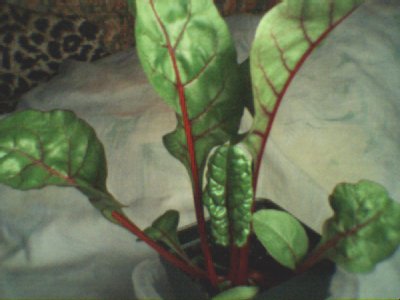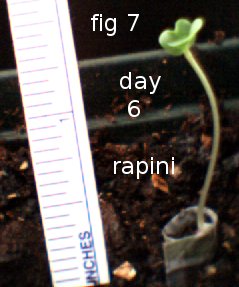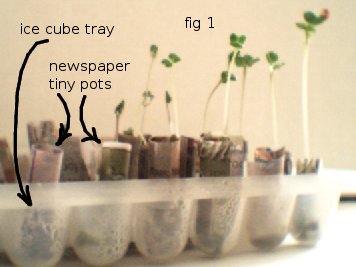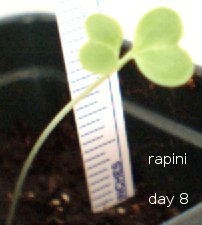by Curlydock
Some months back, in November / December of 2006, I wrote several installments dealing with seedling identification. I sprouted seedlings and tried to keep a webcam record of them for future reference. The seedlings became spindly and were growing slowly because, I believe, of short winter days and little light.
I did not want to burn energy in lights and timers, so I left the mini-garden in the southern window to fend for itself. I did keep it watered with rain-water that had been slow-sand filtered. I also warmed the water a bit by storing a gallon or so of it by a furnace duct.
As the days got longer I noticed the plants began to grow more rapidly. A few weeks ago I harvested and ate a head and some leaves from the rapini. It was delicious.
Today, before I harvested and ate the radish I took some webcam shots of the radish and the chard. Someone frequently visits this blog looking for pictures of the plants. So, here are a few more plant pictures.
Above is the white hailstone radish. It has been 110 days since the seed was planted. Below is the rhubarb chard. It was planted 82 days ago.
The pots they grow in are about 3 inches cubed. The potting medium in each is half peat moss and half my vermicompost. Each pot also has about 2 tablespoons of crushed eggshell.
The plants are very delicate. They don’t get strong breezes so their stems have not grown stiff. When I moved the chard to photograph it, it fell over. I propped it up a with a ball of tissue.
When I removed the tissue I noticed the tissue was damp, and the odor I cannot describe except to say it was heavenly.
Drinking in that odor of healthy organic compost in communion with the chard roots reminded me powerfully of what we have lost in our culture. This is the odor of a small organic farm. It is the odor many more of us should be familiar with. It is the odor more of us must become familiar with if there is to be a future for us on this planet.
This odor energizes an intuition of what is right and what is wrong. It puts me out of reach of the propoganda of pundits, thinktanks, preachers, bad teachers, blustering talk show bloviators, and all apologists for greed who seek to influence and control us. It puts my mind and heart on a firm foundation. Let them spin and grin, with their fingers crossed. I know which side I’m on. They won’t fool me again.
